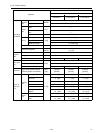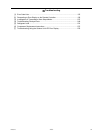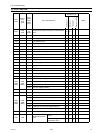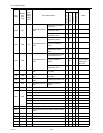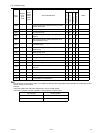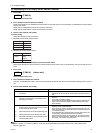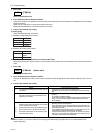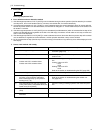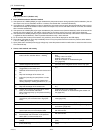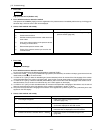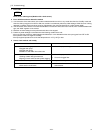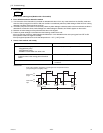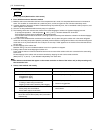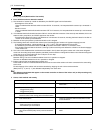
[ IX Troubleshooting ]
- 160 -
HWE09120 GB
1. Error Code
Discharge temperature fault
2. Error definition and error detection method
1) If the discharge temperature of 120 °C [248°F] or more is detected during the above operation (the first detection), the outdoor
unit stops once, turns to anti-restart mode for 3 minutes, and restarts after 3 minutes automatically.
2) If the discharge temperature of 120° C [248°F] or more is detected again (the second detection) within 30 minutes after the
second stop of the outdoor unit described above, the mode will be changed to 3 - minute restart mode, then the outdoor unit
will restart in 3 minutes.
3) If the discharge temperature of 120°C [248°F] or more is detected (the 30th detection) within 30 minutes after the stop of the
outdoor unit described above (regardless of the first or the 29th stop), the outdoor unit will make an error stop, and the error
code "1102" will be displayed.
4) If the discharge temperature of 120°C [248°F] or more is detected more than 30 minutes after the previous stop of the outdoor
unit, the detection is regarded as the first detection, and the operation described in step 1 above will start.
5) For 30 minutes after the stop (the first stop or the second stop) of the outdoor unit, preliminary errors will be displayed on the
LED display.
3. Cause, check method and remedy
1102
Cause Check method and remedy
(1) Gas leak, gas shortage Refer to the page on refrigerant amount
evaluation.(page 125)
(2) Overload operation Check operating conditions and operation status of indoor/
outdoor units.
(3) LEV failure on the indoor unit Perform a cooling or heating operation to check the opera-
tion.
Cooling: Indoor unit LEV
LEV1
LEV2
Heating: Indoor unit LEV
LEV2
Refer to the section on troubleshooting the LEV.(page 245)
(4) Outdoor unit LEV1 actuation failure
Outdoor unit LEV2 actuation failure
(5) Closed refrigerant service valve Confirm that the refrigerant service valve is fully open.
(6) Outdoor fan (including fan parts) failure, mo-
tor failure, or fan controller malfunction
Rise in discharge temp. by low pressure
drawing for (3) - (6).
Check the fan on the outdoor unit.
Refer to the section on troubleshooting the outdoor unit
fan.(page 243)
(7) Gas leak between low and high pressures
(4-way valve failure, Compressor failure, So-
lenoid valve (SV1a) failure)
Perform a cooling or heating operation and check the opera-
tion.
(8) Thermistor failure
(TH4)
Check the thermistor resistor.(page 191)
(9) Input circuit failure on the controller board
thermistor
Check the inlet air temperature on the LED monitor.



